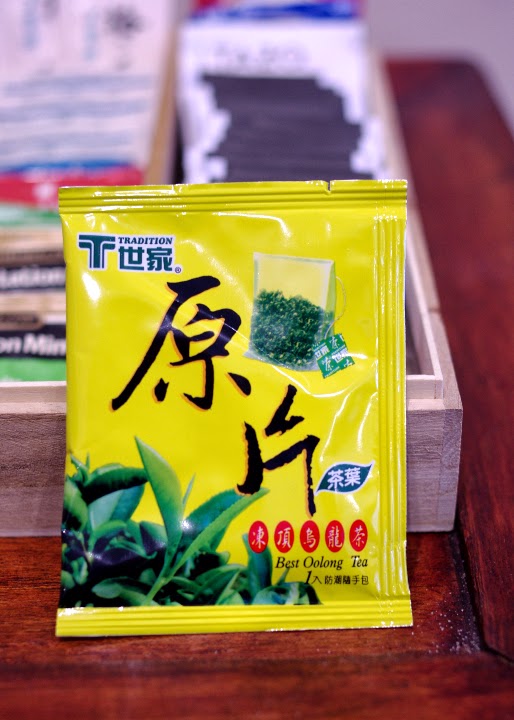Today, I am drinking two
green teas I had for a while. Green teas are valued for their
freshness, so neither of these two teas I am drinking are at the peak
of their flavors.
The first one is named
“Taiwan Native Green Tea” that I bought at the “Double Fire
Brand Store” in Yingge, a northern Taiwanese town known for its
pottery. Taiwan is very Oolong-centric. Majority of the tea was
made into Oolong for domestic consumption. Only a small area of
northern Taiwan produces green tea.
The dry leaves are dark
green, irregular string-shape, some tips with white hair. Dry aroma
is surprising sweet and toasty.
Steep...
... and turn!
I am using a competition / cupping style tea set, consist of a cup with handle and lid with a notch in the rim instead of pour spout, a bowl, and a dish.
The liquor is clear pale
yellow with very slight green tinge. The aroma is forest, seaweed,
and cornhusk. The flavor is grassy and mineral. The mouthfeel is
lingering and astringent, especially towards the back of the tongue
and mouth. The returning sweetness is strong, reminiscent of honey
and dry fruit. Overall impression is rustic and serious.
On to the next tea.
The
second tea I am drinking is “Bilochun Green Tea” sold by Ten Fu’s
Tea, that Kevin got as a gift. Bilochun is one of the best known
Chinese green tea, originated in Jiansu province, especially around
Lake Tai area, nicknamed “Fragrant Shock” for its intense aroma.
However, this is not the real Bilochun. The description on the
package called this a “Fujian Bilochun”, “using Fujian
province’s fresh spring tea leaves, hand-made with unique Bilochun
style process”.
The
dry leaves are smaller, more uniform, with higher percentage of white
hairy tips. Dry aroma is very floral.
The
liquor is gold on the side of orange, with lots of surface chrystals.
The aroma is cedar, cut grass and jasmine. The flavor is citrus and
wood. The mouthfeel is less astringent, but slightly acidic. The
returning sweetness is less strong, reminiscent of under-ripe
strawberry. Overall impression is lively, feminine and slightly
affected.
Looking
at the steeped tea leaves afterwards, I am surprised that the Fujian
Biluochun shows signs of oxidation: rusty-red edges. This kind of explains the fruitiness in the flavor. I don't really know if that
is a common characteristic of Biluochun, or just a sign of careless tea
processing. Maybe I will investigate further.











